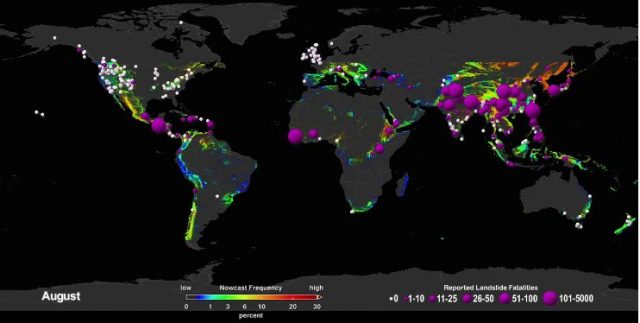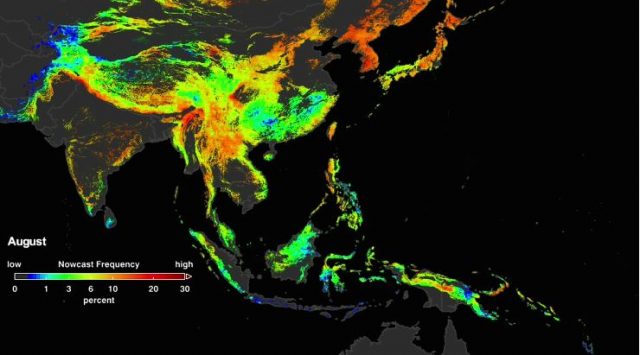26 March 2018
NASA models landslide climatology
Posted by Dave Petley
NASA models landslide climatology
In the last few days, NASA has released a range of new materials and data to understand global landslide occurrence. This work, which excellent as ever, has emerged from the team led by Dalia Kirschbaum, with substantial input from Thomas Stanley and others. The volume of material is far too great for a single post, so here I will focus here just on their work on global landslide climatology.
The NASA team have developed a new model, Landslide Hazard Assessment model for Situational Awareness (LHASA), which determines landslide susceptibility every 30 minutes. The NASA webpage describes the model thus:
This model uses surface susceptibility (including slope, vegetation, road networks, geology, and forest cover loss) and satellite rainfall data from the Global Precipitation Measurement (GPM) mission to provide moderate to high “nowcasts.”
Associated with this work, NASA have placed online a series of animations, all of which can be downloaded (and so represent excellent teaching resources). The animations are made on a monthly basis, and in each case they run twice – first showing merely the climatology, and second with the landslides from the NASA landslide database overlain. So this, for example, is the animation for August, a key landslide month globally, with the landslide events overlain:-

An image from a NASA animation of global landslide climatology.
.
Whilst this image shows the landslide climatology for Asia only, without the landslide events overlain, for the same month:-

The landslide climatology of Asia in August. Still from an animation by NASA.
.
The animations serve to illustrate beautifully both the highly susceptible areas of the Earth’s surface, and the changing pattern through the annual cycle. I have frequently noted the global landslide cycle, with the peak in July and August, and the incredible importance of South and East Asia in defining this pattern. These NASA animations provide further evidence.
If we are to reduce losses from landslides then Asia needs to be a key focus.


 Dave Petley is the Vice-Chancellor of the University of Hull in the United Kingdom. His blog provides commentary and analysis of landslide events occurring worldwide, including the landslides themselves, latest research, and conferences and meetings.
Dave Petley is the Vice-Chancellor of the University of Hull in the United Kingdom. His blog provides commentary and analysis of landslide events occurring worldwide, including the landslides themselves, latest research, and conferences and meetings.
This is nothing short of brilliant. Thanks to the researchers and for the posting. We will be using this process in our 2nd year of Climate Change Engineering, which begins on June 4 2018, here at Holy Name University, Bohol.